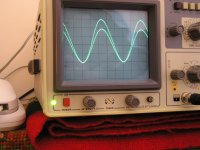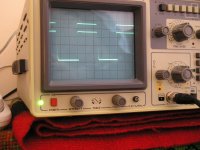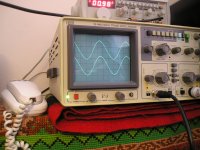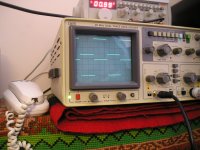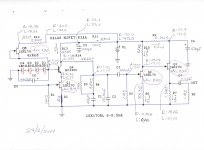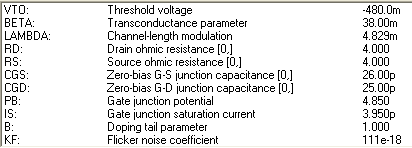photo :d
That is your 41dB PDF's variation for your Jfets Idss, right? I see you may use remote sensing from PSU too, 4 wires or not? Blurry to see better. And many Wima capacitors if I can guess right. Did you succeed in hum, is it all quiet also? The PSU is from the PDF too?
yes.that`s right.i used schematic from pdf with your sugestions to adapt 5.5-6ma idss jfets to the original schematic.
psu uses 4 wires.
the caps all are wima.in future i want to change the ones in signal path with some pio from ampohm or something from mundorf
i`ve tested the pre with battery and with the shunt regulator from the pdf.but guess first i have to put the pre into a metal box and then test it again because i have very much ambiental noise if i can call it so(it can be heard at the superior half of volume) and i can`t make a fairly comparation.anyway with the volume not too loud the pre is really quiet and this when is powered with the shunt
really nice circuit.didn`t expect it to sound this good
psu uses 4 wires.
the caps all are wima.in future i want to change the ones in signal path with some pio from ampohm or something from mundorf
i`ve tested the pre with battery and with the shunt regulator from the pdf.but guess first i have to put the pre into a metal box and then test it again because i have very much ambiental noise if i can call it so(it can be heard at the superior half of volume) and i can`t make a fairly comparation.anyway with the volume not too loud the pre is really quiet and this when is powered with the shunt
really nice circuit.didn`t expect it to sound this good
You can succeed in making it really quiet. The one just before by smpkje is 15dB more than yours (56dB) with 5-6 times lower output cartridge and he reports 'gravely silent'. First of all a box of course. Then you can judge grounding if anything hum & buzz remains. I see a soundcard interface? You may use for FFT to help you watch harmonic noise (50-100Hz and multiples) to debug when finishing.
.........Can you post your method with a short explanation of why you choose certain options in those calculations?
I would like to learn how.I check gain, bias, ............ I adjust the Beta and Vpinch on the Jfet model............I am confident on what to adjust
I don't doubt your skill.
I judgementally balance the whole circuit against the query and the Jfets at hand. Like noise contribution VS needed gain for stated cart, checking the Riaa curve with simulated anti Riaa, because it changes with load resistors and bias currents, THD must stay in bounds, watching there is supply headroom etc. The so many builds and feedback plus the different copies I have listened in many systems help too. Nothing exotic as a method. The Jfet model has been refined for real world measurements, following Yfs curves from Toshiba and using adequate -Vpinch so it yields reality compatible bias and gain, stuff like that. Variations on a known theme in other words.
Hi Salas,
Do you calculate, or do you use simulation?
If you calculate, can you share, please, the formula(s)?
Do you calculate, or do you use simulation?
If you calculate, can you share, please, the formula(s)?
Quite a difference in output and faithful to prediction. Lets see if it will fill out better in your system. Those Tempo III Densen DM10 driven are 4 Ohm sensitivity spec I presume.
- Home
- Source & Line
- Analogue Source
- Simplistic NJFET RIAA
